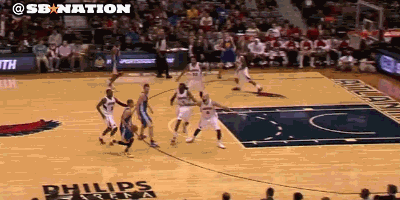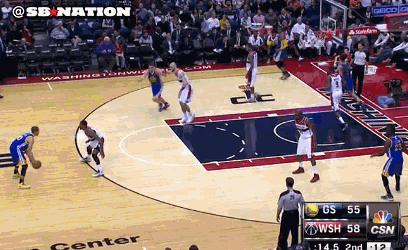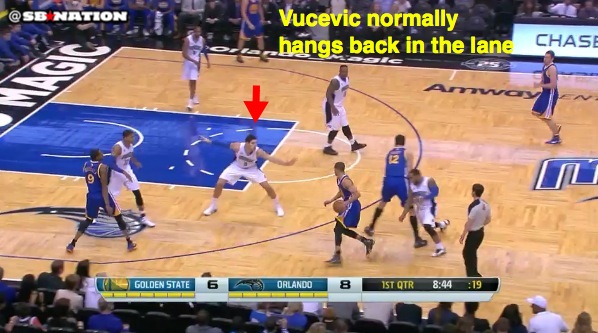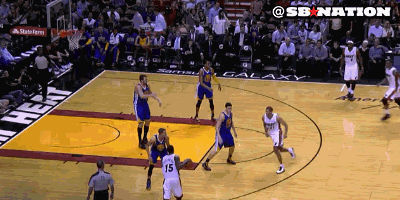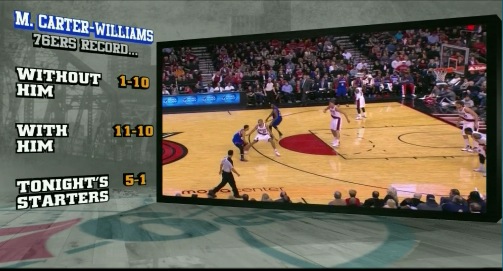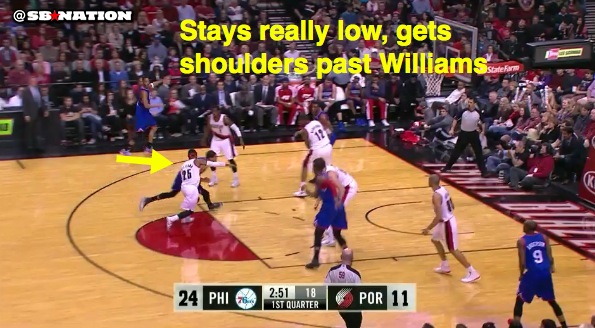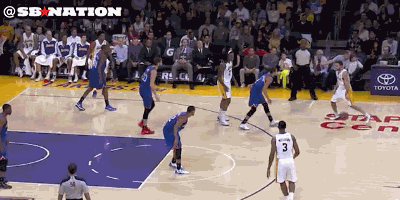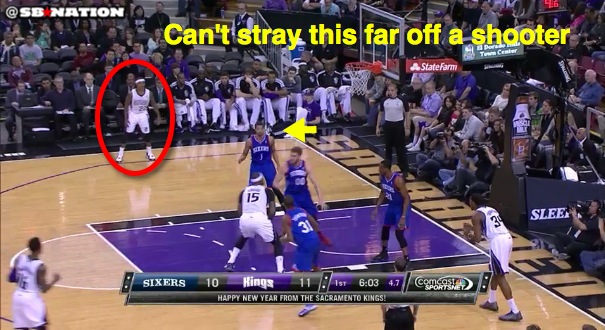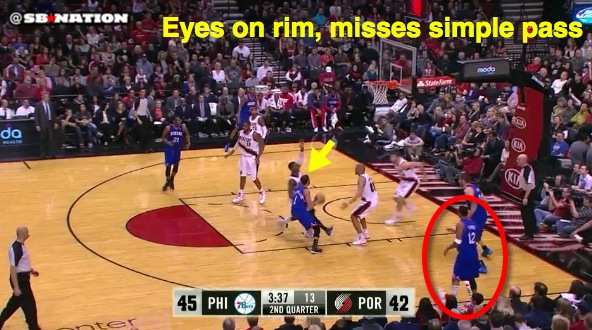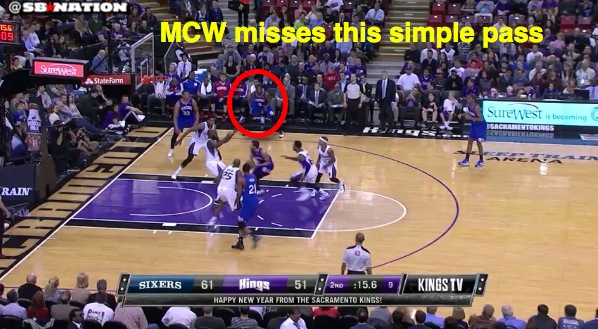
The Warriors have hit the soft underbelly of their schedule and have feasted accordingly, led by the brilliant Stephen Curry, a resurgent David Lee and an elite defense. Also: we look at where Michael Carter-Williams needs to grow to join the point guard elite.
The NBA season is 82 games long. Each team plays 52 games against teams from its own conference and 30 from the other conference. Each team plays 41 games in their building and 41 in another team's. Each team has long homestands, difficult road trips, back-to-backs, four-in-five stretches and trips to several cities in a short span.
But not all of those teams go through those types of stretches at the same time. Consider the Golden State Warriors, for example. Early on, their place in the Western Conference hierarchy was disrupted by a mediocre 14-13 start. The Bay Area was filled with much angst, with some calling for Mark Jackson's firing.
![]() More Prada's Pictures
More Prada's Pictures ![]()
![]() More Prada's Pictures
More Prada's Pictures ![]()
All this happened even though the Warriors had a brutal start to the season. Fourteen of their first 22 games were away from Oracle Arena. Of their first 31 games, three were against the awful Eastern Conference. Over that same time period, the Portland Trail Blazers, the darlings of the NBA, played 10 games against the East. Thirteen of the Warriors' first 30 games have come against the nine other best teams in the league. Only six of their first 30 games have been against the 10 worst teams in the league. Throw in a couple injuries (Andre Iguodala, most notably), and you can see why the Warriors struggled early on.
Now, the schedule is starting to get easier, and the Warriors are soaring. Golden State is winners of nine in a row after demolishing the Wizards in D.C. on Sunday night, and there's reason to think big. Iguodala is back, so the Warriors' starting lineup -- their #fullsquad, if you will -- is dominating teams again. With the worst of the schedule behind them, the Warriors could conceivably soar to the very top of the Western Conference.
This isn't the same Warriors team we saw last year, nor is it the same club we saw in the playoffs. Last year's regular-season club ran a bazillion baseline screens to free Stephen Curry and Klay Thompson, with David Lee or the departed Jarrett Jack often functioning as the primary ball-handler. It also was in the beginning stages of revamping its defensive plan to hang back more on pick and rolls, with Festus Ezeli handling the role of defensive anchor as Andrew Bogut struggled with injury. Last year's playoff Warriors, of course, bombed away from three-point lane using Curry's brilliance and unleashed Harrison Barnes' full potential as a small-ball power forward.
This year's Warriors have tried their best to blend those two clubs. They don't play small like they did in the playoffs, but they no longer feel the need to limit Curry's ball-handling. No longer is Curry relying on caddies to set him up for shots. Now, he's looking to shoot early in the clock, running pick and roll significantly more often and taking full advantage of his pinpoint passing skills with either hand. The offense is much simpler, but because it's running through Curry so often, it's also often much better, though Curry has sometimes struggled with turnovers.
Nobody in the league passes out of traps better than Curry. Look at some of these deliveries.
And because Curry is a threat from anywhere in the frontcourt, he is trapped often. At the very least, teams that'd normally drop their big man back will inch him far closer to the three-point line than normal. The Magic's scheme, for example, calls for Nikola Vucevic to hang much futher back than this, but he must respect Curry's shooting.
Curry is eventually able to expose Vucevic's lack of mobility by veering into the lane, looking like he's going to shoot a floater and instead and throwing a pinpoint pass to Bogut for a dunk.
Given Curry's passing ability, this opens up the other four players. Thompson is having his most efficient shooting season, feasting on catch-and-shoot opportunities from Curry. Lee has become a real threat in the pick and roll after a slow shooting start, and the Warriors have also used his passing to set up others in 4 on 3 situations once Curry delivers the ball out of the trap. This was especially important in Thursday's big win in Miami.
The Warriors are also clever with how they align the rest of the floor when Lee is involved in a pick and roll. As the play is happening, they'll use their other four guys in many different ways. Sometimes, they'll run misdirection to clear out a side. Sometimes, Bogut will come up and be ready for a pass to set up a different cutter. Notice what Curry does, for example, on this critical possession against the Heat.
In addition, Lee won't roll all the way, stopping short so he gives himself enough space to make a pass/shoot/drive decision on the fly.You'll see a similar example of Lee timing his role a bit slower on this Christmas Day layup against the Clippers. He doesn't charge hard, but instead tap-dances a bit, catching the ball further away from the rim before accelerating for the layup. Again: the idea is to give Lee a chance to see the floor while the two other defenders harass Curry.
Iguodala and Bogut, meanwhile, are fitting in beautifully. Iguodala has become an excellent catch-and-shoot player, while Bogut is starting to become more offensive-minded after not looking for his shot as much early in the season.
Of course, both of those players are the lynchpin of what is now the fourth-best defense in the NBA. Bogut is not what he used to be offensively, but he has regained his status as one of the NBA's feared rim protectors, both in blocking and altering shots. Here's an example of him shutting off the rim while doing the latter.
The Warriors play him even further back on pick and rolls than most centers, even those that also drop back as part of conservative schemes. Not only does that keep him protecting the rim, it also allows him to get away with all his little off-ball tricks, because referees aren't watching the paint as closely as the perimeter. Grantland's Zach Lowe detailed some of these earlier in the season.
The improved perimeter defense helps make that possible. Iguodala has swallowed up the wing as he usually does when healthy, using his long arms and intelligence to shade his man into the help. Thompson has grown enough as a defender to take on many of the league's quicker point guards, allowing Jackson to hide Curry on defense. Teams can still exploit Lee in pick and rolls, but with Iguodala, Bogut and off-bench Swiss Army Knife Draymond Green around, the Warriors have been able to minimize his negative impact with a variety of different lineup combinations. (The exception is the Lee/Marreese Speights combination, which Jackson has curiously used for 75 minutes this season. The Warriors are allowing nearly 108 points per 100 possessions when those two share the floor, per NBA.com. However, 53 of those minutes have come with Barnes instead of either Iguodala or Green).
![]() More from our team sites
More from our team sites ![]()
![]() More from our team sites
More from our team sites ![]()
Even amid the winning, there are some warning signs. Golden State's bench has struggled mightily all year and often gives up the leads the starters create. Toney Douglas and Speights have been disappointments, with the former unable to run an offense and the latter firing perimeter blanks and struggling defensively. Jackson has shown an odd devotion to an all-bench unit of Douglas, Kent Bazemore, Barnes, Green and Speights, which has been outscored by nearly 12 points per 100 possessions this season. The group works hard defensively, but can't score a lick because nobody can initiate the offense.
One would think staggering the starters with some reserves would help, whether it's throwing in Lee's scoring or Iguodala's playmaking, but neither has come to pass. Iguodala has played just 61 minutes with Douglas all season, for example. Lee, meanwhile, has played just 57. The Warriors could definitely take off if they could trade for someone that could replicate what the departed Jarrett Jack gave them last year, but they could be more creative in uncovering solutions internally.
Still, this might be one of those issues that resolves itself over time. Perhaps Jackson will realize the need to break up his bench mob as he gets deeper into the year. Perhaps the force-feeding to Barnes on the low block will give him fuel to improve and take over the second unit. Perhaps a point guard can be found cheaply via trade. Keep in mind: Once we get to the postseason, starters play heavier minutes, which will benefit the Warriors as long as they remain healthy. As long as they can get there, they'll be as tough an out as anyone, especially now that the soft underbelly of the schedule is upon them.
They just can't afford a serious injury to any of those five starters.
UNDER THE MICROSCOPE
We take a look at one player each week that is either struggling or has displayed strong skill development.
Here's an interesting stat, straight from the Portland Trail Blazers' broadcast on Saturday night.
The 76ers' stunning 101-99 win that night brought their record to 12-10 when Michael Carter-Williams suits up, compared to 1-10 without him. Clearly, the guy's been a revelation, even if his shooting has really been off recently. Digging deeper, and there's a lot of reason for optimism. The areas where he struggles are generally the kind where young players get better.
Carter-Williams' size and length are his best attributes, especially given how he uses them. When he drives, he turns his body to shield the ball, allowing him to power through smaller guys. His handle was a question coming out of school, but he's been able to mask it this way.
And as he gets closer and closer to the hoop, his ability to loft shots over big men and see cutters to the basket has been impressive. Watch how he uses his body to ward off the Blazers defenders, then uses his size to see over seven-footers Robin Lopez and LaMarcus Aldridge to drop off the pass to Thaddeus Young.
Carter-Williams isn't naturally quick, but he covers so much ground on his long strides that he becomes functionally quick. Combine that with his devotion for staying low, and he is still able to get his shoulders by his primary defender, the key benchmark in defining a blow-by off the dribble. Look at how he's able to explode past Mo Williams here.
And that length. Oh, that length. When used properly, it can disrupt something as simple as a pass out of a trap on a pick and roll. This delivery by Jordan Farmer is normally one of the easiest a point guard can make in the NBA, but Carter-Williams' arms make it impossible.
Where does MCW need to grow? For starters, he has to stay attentive when his man doesn't have the ball. He has great natural anticipation skills, which allow him to pile up tons of steals, but he also needs experience to know how to manage these situations. He gets caught ball-watching or fruitlessly trying to help while his man sneaks away for an open shot. You can understand the desire to help on DeMarcus Cousins on this play, but Carter-Williams is better served being closer to the open Isaiah Thomas in the corner here.
Moreover, while he uses his long arms well and is very quick laterally in isolation situations, he still slams into too many screens. He'll need to add strength and better anticipate where the picks come from to improve here. Dropping under screens instead of trying to fight over the top all the time may help too given his length.
On the other end, while his inconsistent jump shot obviously needs work, but so does his finishing ability around the basket. Carter-Williams too often will pick up his dribble at the free-throw line or beyond and use two long strides, jump off two feet and shoot a floater instead of going all the way to the basket. He still tries to navigate over and around defenders instead of through them, which is why he's taking less than four free throws a contest.
That kind of maneuver costs him in this example. Rather than continuing to accelerate all the way to the hoop, he tries to jump stop from the free-throw line. All that does is allow Anthony Davis to get the angle on him.
And the lowering of the shoulders has a consequence, too. While he's great at picking out cutters in front of him, he can develop tunnel vision and miss shooters to his side. These plays ended poorly because Carter-Williams didn't spot open shooters in the strongside corners.
But these are all easily-correctable flaws. His jump shooting will come in time, and it's important for the rest of his game to keep shooting anyway because it forces defenders to play him honestly, opening up drives. He'll soon learn the tendencies of his defenders, when he can help and when he should stay at home. He'll even get stronger and become a better finisher around the rim.
The raw talent is intriguing. His combination of length, fundamentals, quick feet and fantastic anticipation skills makes him a far better NBA point than college lead guard. He can already help a team win even when he's not scoring, and that's hard for even the league's best point guards to do.
LEFTOVERS
10 other observations from the week that was.
- The Spurs righted the ship with a huge win over the Chris Paul-less Clippers on Saturday, but something seems a little off with them, 26-8 record notwithstanding. Danny Green and Tiago Splitter have both failed to grow this season, which explains why last year's lights-out starting lineup is a negative unit this year. Gregg Popovich has recently inserted bench maestro Marco Belinelli into the starting group to try to inject some life into it, but while Belinelli continues to light up the nets offensively, his struggles defensively hurt the Spurs. Not only is he slow on the ball, but his technique off the ball is a problem. Belinelli has the right idea to come over and provide backside help with Tony Parker switched onto Carmelo Anthony, but by running towards the play instead of sliding, he gets himself off-balanced and cannot close out on a red-hot Iman Shumpert in the corner.
- One of the biggest keys to Kendall Marshall's rise is that he's finally looking to score. A stint in the D-League helped teach him that he can't just play three-point line to three-point line and zip passes to better players at this level. Moves like this are encouraging because they eventually set up all the passing. He'll need to continue to use that stop and go move when teams play off him.
- Defense continues to be a major issue for the Clippers, and it'll get even worse with Darren Collison replacing Chris Paul. How do you respond this slowly to a dribble handoff?
- Not to step too much on Doug's toes, but this was a brilliant Pacers' after-timeout play.
- With Russell Westbrook sitting, Kevin Durant's getting a lot more of this kind of defense lately.
- The Hawks are definitely confusing teams when they let Pero Antic fade to the three-point line and he actually fires with confidence. There's no way a traditional center like Bogut can close out to Antic and protect the rim.
- Remember how we discussed the Knicks' nasty habit for switching off-ball screens last week. The Wizards are often just as bad.
- A healthy Trey Burke has been a big boost for Gordon Hayward because it frees him to succeed while coming off screens. Hayward is significantly better scoring or passing on the move, whereas he's not as good creating from a standstill position. This is the kind of pass the Jazz's decrepit point guards in November could not deliver.
- I worry about how many minutes Jimmy Butler is playing while fighting through a turf toe injury, but it seems like he's starting to get his legs back under him.
- This was unbelievable execution of one of my favorite plays: Pick and roll chest, i.e. the Ray Allen play.
![]() More SB Nation breakdowns
More SB Nation breakdowns ![]()
![]() More SB Nation breakdowns
More SB Nation breakdowns ![]()
More from SB Nation NBA:
• NBA Power Rankings: Can the Warriors join the league's elite?
• The Hook: Kobe, Bynum and the death throes of LA's mini-dynasty
• Proposed Bynum-for-Gasol trade losing steam
• Dennis Rodman's North Korea dream team roster is spectacular
• Rick Carlisle blasts New York media in support of Mike Woodson

